Travel entry - Indian Himalayas (Rumbak to Yurutse) in Melbourne Diaries
- Feb. 4, 2014, 2:37 a.m.
- |
- Public
The next day takes us past the small town of Yurutse, and is again a fairly undemanding leg. The valley widens out into a dusty, bowl-shaped expanse, and I’m passing numerous horse graves and stupas, as well as the occasional pyramid-shaped tent providing water and basic food items.
At a Yurutse campsite, I encounter the four gigantic Germans I noted in an earlier entry. However, things have stalled badly for them. They are having problems with the altitude (Yurutse being over 4,000m high), experiencing migraine headaches and vomiting, and have no altitude sickness medicine nor any real idea of how to respond to the condition. One of our guides hands over some pills and advises them to rest for another day and, if the symptoms continue, immediately head downhill back to Spitok (beside the main road to Leh). The advantage of our own group’s more laissez faire approach is, I suppose, better acclimatisation. I would instinctively try to ‘push myself’ on such a walk, like the Germans have done, and would probably end up in much the same state.
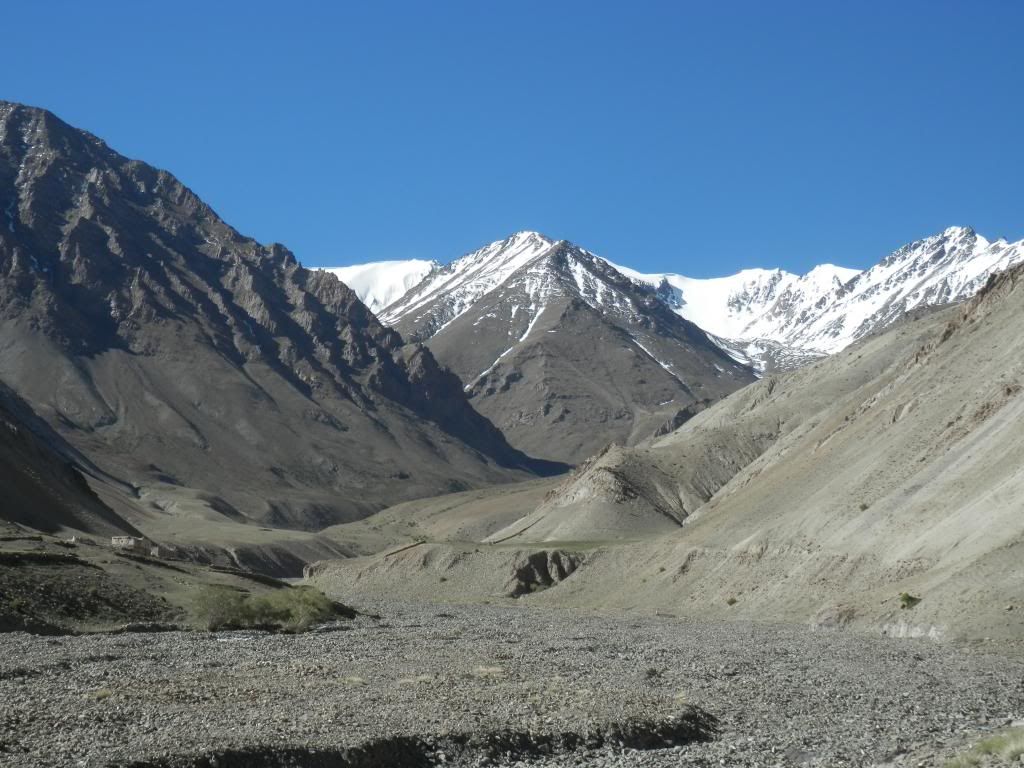 Start of this leg
Start of this leg
Our own camp isn’t much further and is at the foot of the first big pass, Gonda La. Beside this rough campsite are the first marmots I’ve seen on this trip. Marmots are an animal that breed in large numbers. This is a good thing for them, because, evolutionarily speaking, they should’ve been wiped out centuries ago. Podgy, stupid, perpetually chirping furballs, they are a bright and easily visible gold colour, and these overgrown hamster’s sole response to the obvious danger that their vivid colouring exposes them to is bury themselves ever deeper into their marmot hole. Unfortunately, the dogs, leopards and other animals that view the marmots as a juicy, fatty lunch are perfectly capable of doing the same thing, and will typically emerge with one in their jaws. However, there aren’t a great many of these predators, so the marmots seem to spend most of their time digging warrens, munching on the ample grasslands and engaging in sparring matches with each other, standing on their miniature hind legs and slapping each other wildly for mating privileges. Further up the hill are a pair of yaks, imposing, angry-looking horned creatures with thick, matted black fur, bovine Cadillac Escalades.
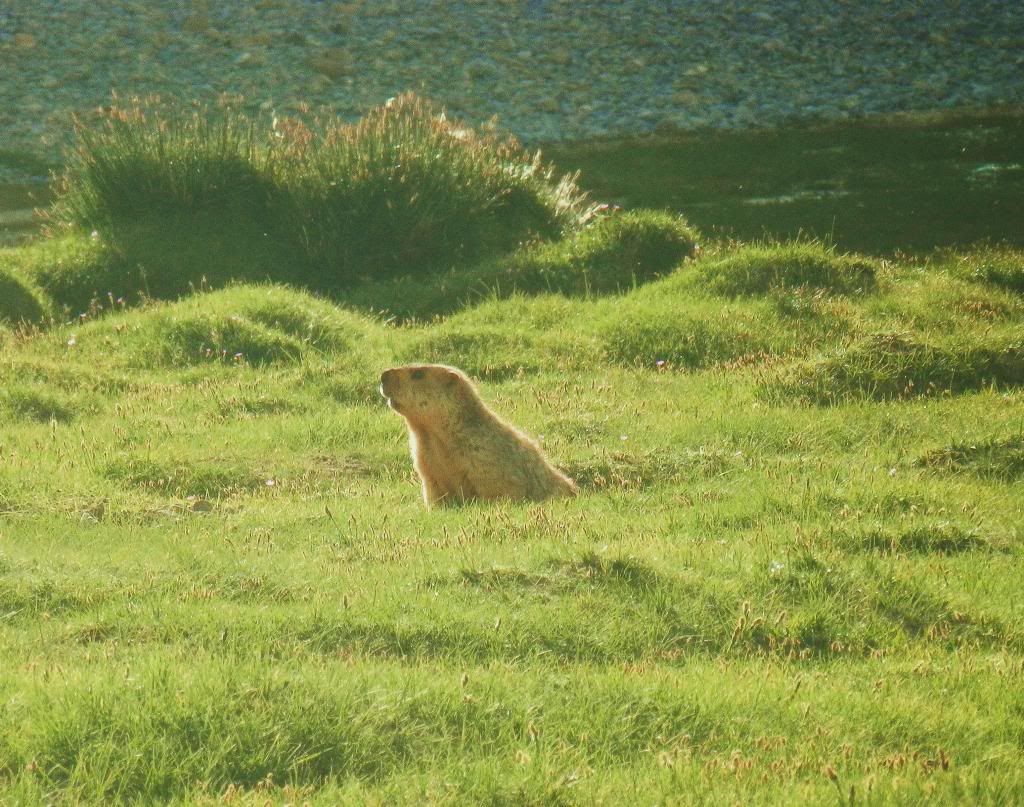 Marmot
Marmot
This is a busy trail, and one is rarely alone for long. Several young French hikers are sighted running (!) down from Gonda La pass. Their impressive hurry is the result of a badly torn backpack on the last, slightly limping, running. With no replacement bag available to them, they have a hard few days ahead of them and are keen to reach the Yurutse homestay as soon as possible. Earlier that day, I also met up with a solo Indian hiker and her disarmingly girlish 19-year old female Ladakhi guide. A couple of years ago, in response to fears about attacks on women, a female-only trekking agency was established in Leh. However, my questions reveal the inexperience of this particular guide:
“So, did you grow up in this region?” “No. I arrived here last year from Bihar.” “Have you done any of the other trails apart from the Markha?” “No. All I know is this trail.” “How many times do you think you’ve been on it?” “Just twice now.”
This strikes me as a limited CV for a person who is responsible for the life of another tourist over several days in a hazardous area. Through my tele-camera, I later see the pair struggling up to Gonda La, the Indian woman clearly exhausted and remonstrating with her guide.
[Our own guide, Garry, later expresses his concern about that local agency, stating that they are comparatively green, and seem to have little idea about altitude sickness or basic first aid.]
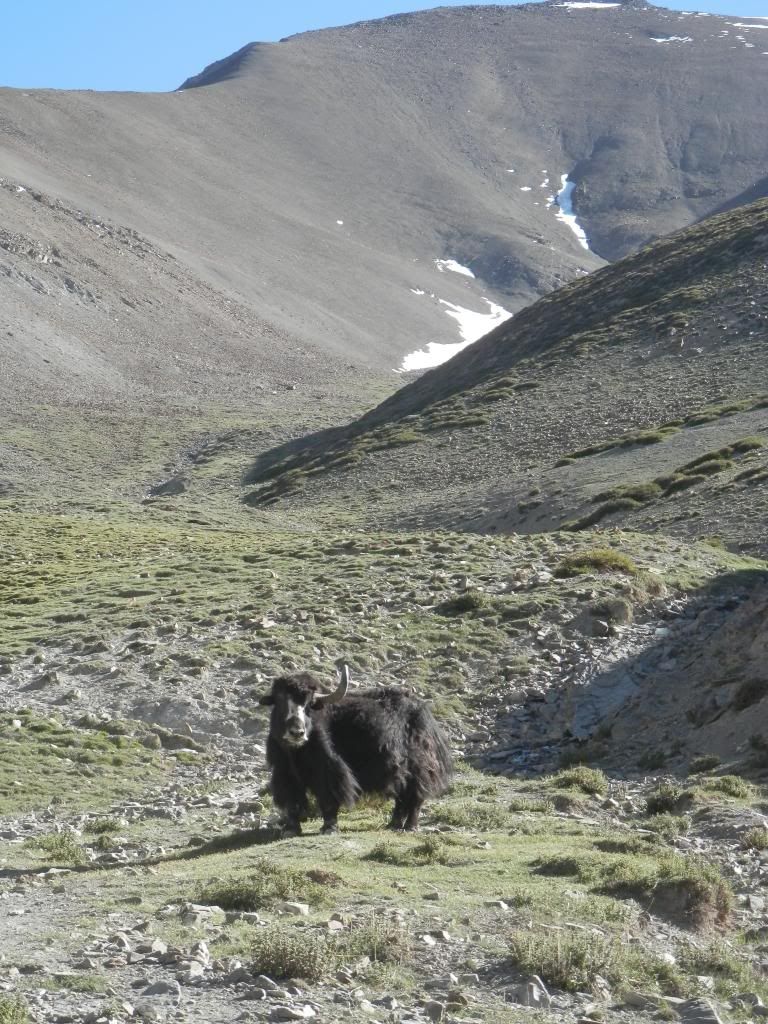 Yak guarding the path to Gonda La
Yak guarding the path to Gonda La
Garry informs me that this area is the key starting-point for expeditions to find the snow leopard, the hen’s teeth of Himalayan fauna. Vast amounts of money have been spent by researchers on trying to find this animal, and in recent years they have appeared on webcams and other electronic footage in the nearby hills - the footage even includes glimpses of lion cubs. Garry, for all his decades of hiking, has only seen the animal once, and only one other guide has a reported sighting. Garry and I hike to a subsidiary hill a few hundred metres up from the campsite, giving me my first good view of Mt Stok to the south and the twisting ridges of the Pamal range to the north. Whilst we are resting beside a small cairn, Garry talks about the Himalayan expeditions of colleagues he works with, including the Australian Sue Fear, who died on Everest a couple of years ago. Everest, in addition to being the world’s highest mountain, is also one of the world’s most prominent open air cemeteries, with half a dozen bodies added to it each year. Garry reiterates concerns that I’ve heard expressed elsewhere about the increasing numbers of wealthy yet highly inexperienced climbers being shepherded to the top of the peak, denigrating the mountain as a ‘circus parade’. He notes how many of Australia’s top climbers have come from the ANU (my own alma mater). I suggest that it might have something to do with the mountaineering opportunities offered by the Namadgi and Kosciusko hills to the south of Canberra, some of the most rugged mountain terrain in Australia.
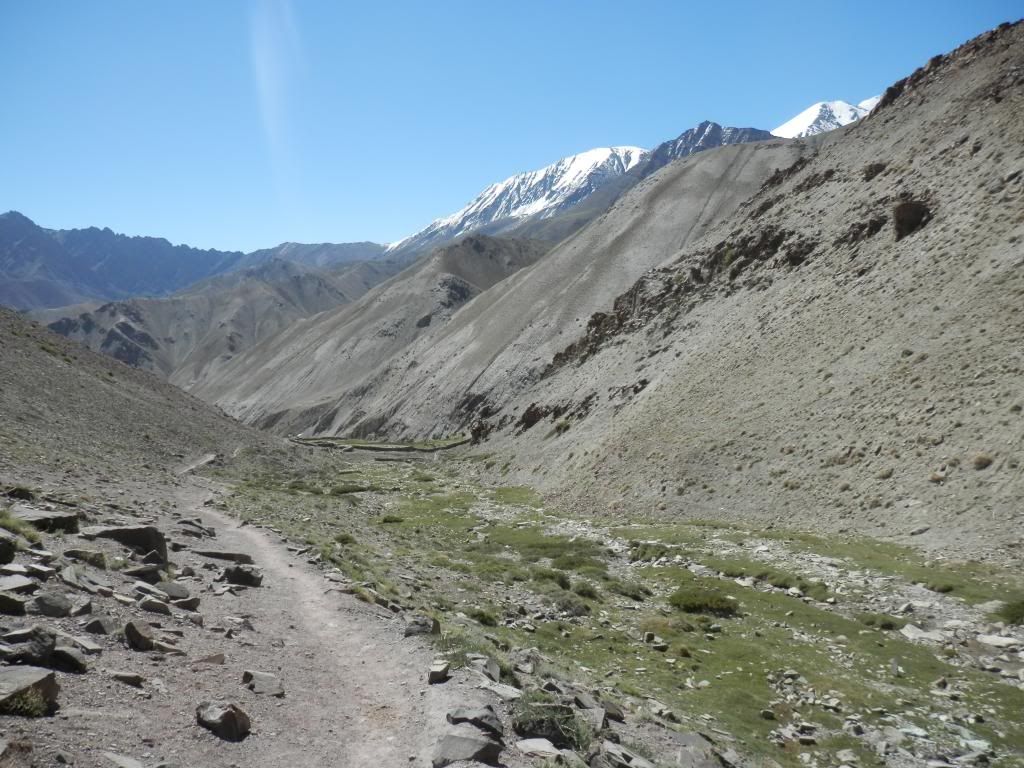 Yurutse trail
Yurutse trail
The next morning, none of us having slept well through a freezing night at 4,400m, there is the early morning ascent of Gonda La pass, the first difficult obstacle. In Australia, such a climb would be a doddle. But up in the Himalayas, where lung capacity falls dramatically, it is a far more exhausting proposition – basic breathing becomes something you have to concentrate on, and you soon become dependent on the trekking poles for support. It's gruelling stuff, and I soon adopt a mental trick from my Australian hiking days by using the GPS altimeter to time my walking breaks: after each 100m climb in altitude I take a 5 min breather; then, as things get harder its each 50m, then, at the very top, each 20m. This way, my focus is on increasingly small distances rather than the more tiring whole. After one hour, and at 4,940m altitude, I’m at the top of the Gonda La, at the barrier between the Stok range vista and the bright orange hues of the Markha valley. The pass is marked out by cairns and a pyramid of prayer Tibetan prayer flags in the traditional blue, white, red, green, and yellow (in that order). The view is glorious, and at first I feel fine, if a little out of breath. But the rest of the group are clearly having issues, as it is another two whole hours before they arrive. I grumpily reason that I could have gone back to the camp and back to the summit again and would still have arrived ahead of them (and I am not, I repeat, superfit in any way). While waiting, increasingly nauseous, for my fellow Australians to arrive, two young Germans emerge at the top of the pass, and start an impromptu snowball fight with the small amount of snow available to us.
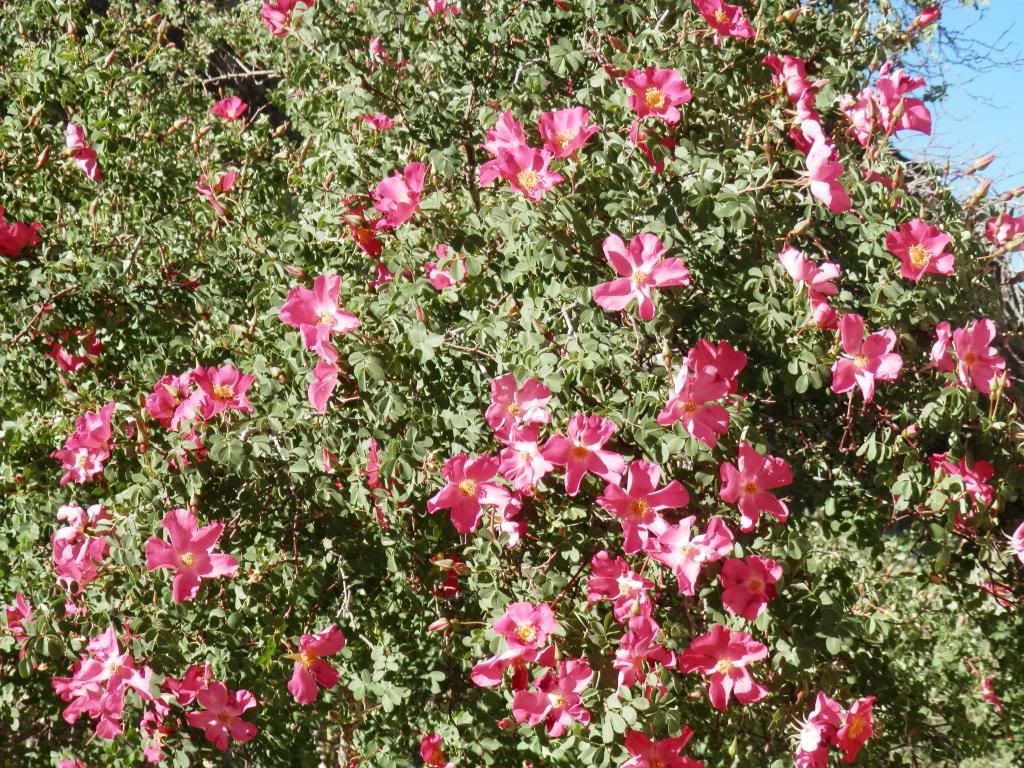 Wildflowers
Wildflowers
Finally, one of our guides (Lopsang of course), also arrives, and we both charge down the marmot-filled slope to where trail links up with the Shingri Nala creek. The scenery changes noticeably from here, the walls forming a narrow canyon within which more Himalayan wildflowers and other plantlife emerge, along with smaller chattering birdlife (mostly wrens and chukas). Even more welcome is a tent selling ‘Godfather Strong’ beers, where I encounter two young Belgians nearing the end of their own trek. They are chain smoking under the canvas tent and looking somewhat malnourished. It appears that, having over-budgeted, they are now monetary difficulties, and complain loudly about the price of homestays and the overall ‘expense’ of Indian travel. It is clear that these men have been misled by their parents’ tales of travelling through India during the sixties on a dollar a day, as they are now balking at the fairly reasonable twenty dollar (all expenses included) per night homestays they’re encountering here. So budget-conscious are they that they have eaten nothing except low nutrition Maggi-noodles throughout the hike (which they pronounce as ‘Marg-gee’) and are, after wrapping up the Himalayan leg of their journey, considering trying to staying to stay for free at Amritsar at the pilgrims’ dormitory beside the Golden Temple, something I try to warn them against (as westerners, they would be most unwelcome amongst the devout dalit-class Sikhs). I had expected to meet hardened Bear Grylls types up here in the Himalayas; instead I’m more often encountering Idiots Abroad. But then I am the fool who walked up to Mt Triund last week headlong into one of the worst monsoon storms in a decade. In the end there is probably no such thing as an experienced hiker, or an experienced traveller for that matter: we’re all a hodgepodge of poor gear, poor thinking and exaggerated ability.
It’s a long wait for the rest of the group again, and after two hefty Godfathers (alcohol content 7.5%) I realise that I’m in a poor frame of mind to be making navigational decisions, and let Garry lead the way for the rest of the trip to Shingo campsite. I’d been hoping to get some sleep at the comparatively lower altitude, but am instead kept awake all night by the camp donkey ‘Baby’, a small and perpetually disobedient ass that crashes clumsily into my tent at regular intervals before scampering off, bleating wildly for the next ten minutes.
 Shingo
Shingo



Loading comments...